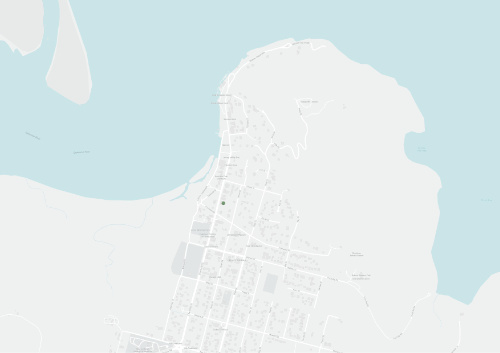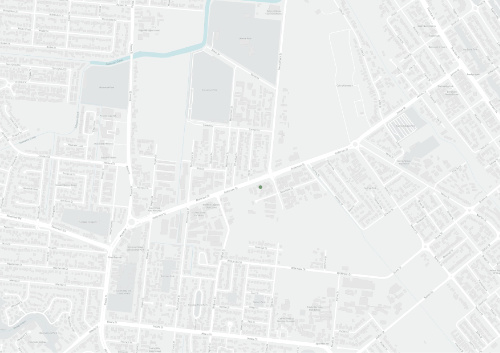A collection of resources and documents relating to the Eastern Cape Water Quality Improvement Plan.
Inland Waters
Related Content
Purpose
Wildfire causes major losses to ground cover, and is a key contributor to erosion of Cape York’s fragile soils, to sedimentation of water ways, and to poorer water quality on Cape York. It also results in reduced biodiversity and a reduction of suitable grazing country.
Cape York NRM delivered Sustainable grazing management and on-ground works: maintaining Cape York’s resource base for sustainable management and use – reducing pests and weeds, improving water quality
in 2013-2016. The project was funded by the Queensland Government’s Queensland Natural Resource Management Investment Program.
The project had a broad impact over its three years of implementation, with signi cant outcomes in developing best practice frameworks, coordination, engagement, capacity building, on-ground works, planning and resource assessment.
Has it been a soggy start to 2021 for most across Cape York Peninsula? It is wonderful to see so much of the landscape come alive early on in the year, and it is certainly flourishing. March flies, mozzies and flying ants are out in force making sure we all know that the rainy season has embraced us.
Following quite a short-lived wet season for three quarters of our region in 2020, I am sure the consistent rainfall is welcomed by those who are receiving it.
Those living and working on the land, with so much rainfall unfortunately comes the erosion, washouts and damage.
Cape York NRM’s Community Action Plan (CAP) team will soon be heading to three communities in the south-east Cape to run workshops to develop the Cape York CAP.
The Great Barrier Reef Foundation will compile input from six Queensland regions to create the state’s overall Plan that will identify shared goals for community Reef protection.
Words Abbey Ernst and Robyn May | Photo Robyn May
2019 marks a decade of successful operation for the Paddock to Reef Integrated Monitoring, Modelling and Reporting Program (Paddock to Reef program).
It is through the Paddock to Reef program that Cape York NRM has effectively continued its work with landholders in the Normanby catchment of the Great Barrier Reef.
Words Sandra Lloyd | Photo provided
Cape York Natural Resource Management (Cape York NRM) has a range of projects focusing on water quality monitoring, grazing and horticulture, weeds and feral animals and gully erosion control. These projects combine to deliver a comprehensive approach to improving the sustainability of the industries and communities on the Cape along with protecting the natural assets and improving quality of water entering the Great Barrier Reef.
Words Juliana Foxlee | Photo Andrew Brooks
Cape York NRM and Northern Gulf Resource Management Group are working with graziers in the Mitchell catchment to help them develop their knowledge of native vegetation management in a bid to reduce erosion.
Cape York NRM Acting Principal Program Manager Michael Goddard is managing the project.
Graziers across Cape York’s Joint Management Area (Palmer, Mitchell and Alice River Catchments) are busy delivering all sorts of exciting projects to improve native vegetation and soil health on their properties.
Since the program began in 2018, graziers have been partnering with Cape York NRM and Gulf Savannah NRM to plan and deliver projects across 16 grazing properties in the region, spanning more than 2.3 million hectares.
The Communities and coastal habitats of eastern Cape York will benefit from the Australian Government’s Reef Trust funded, Catchments to Coral program. Running from 2021–2023, the project will invest in a broad range of activities that focus on improving the health and resilience of eastern Cape York catchments and coastal ecosystems.
Cape York NRM’s Healthy Farming Futures project is supporting a Cape York Wildlife Sanctuary which has so far received over 2,500 mm of rain this wet season, to stabilise the landscape to protect critical habitat.
Three large projects to repair riverbank sites severely damaged by the 2019 monsoon trough will commence on the Endeavour River at the beginning of the 2021 dry season.
Rehabilitation of the sites will be aided by the use of proven techniques such as bank battering, rock armouring, and revegetation with appropriate riparian plants.
One large river bend located at Scrubby Creek will be rehabilitated using lines of timber piles vertically driven into the reshaped bank to reduce the velocity of water as it moves around the bend.
This edition of the Cape York Healthy Country Newsletter highlights how coordination and working locally can make a big difference across Cape York.
The article on the coordinated burning program organised by our Regional Agriculture Landcare Facilitator, Andy Hartwig, emphasises how supporting landholders to partner across tenure and property boundaries has delivered our largest early burning program to date.
Over the past several months, community members in south-east Cape York have come together during five interactive workshops to develop the Cape York Reef Community Action Plan (CAP).
The workshops included community events held in Wujal Wujal, Cooktown and Hope Vale, as well as a school workshop at Endeavour Christian College and a school holiday session with young Reef enthusiasts, and were well attended by a range of community members including Traditional Owner Groups, land managers, scientists, local council members and ranger groups.
Normanby catchment ‘Peer to Peer Grazing Group’ activities may have stalled during the coronavirus travel restriction period, but its Focus Farm initiative is going strong.
The Focus Farm initiative aims to assist land managers to achieve their goals with the assistance of a peer support group of farmers, and specialist service providers.
Words and photo Robyn May
Rubber vine has been treated in the Laura region by Cape York Weeds and Feral Animals (CYWAFA) Inc. with support from Cape York NRM.
Cape York NRM Gully and Grazing Project Officer Michael Goddard said the project was all about restoring native ground cover and reducing erosion.
‘The Laura River Rubber Vine Control Project is reducing the amount of rubber vine growing along the waterways, allowing the return of native grasses and minimising soil loss during rain events,’ he explained.

